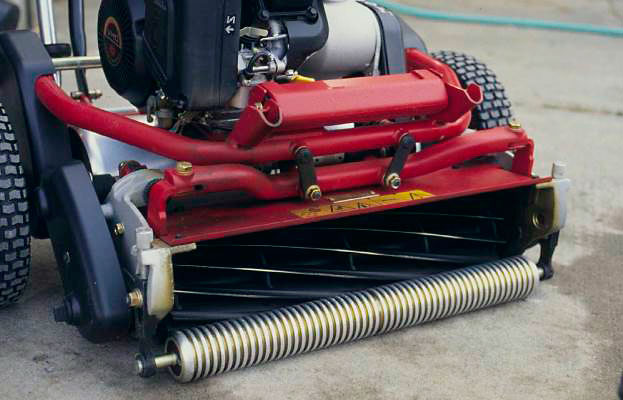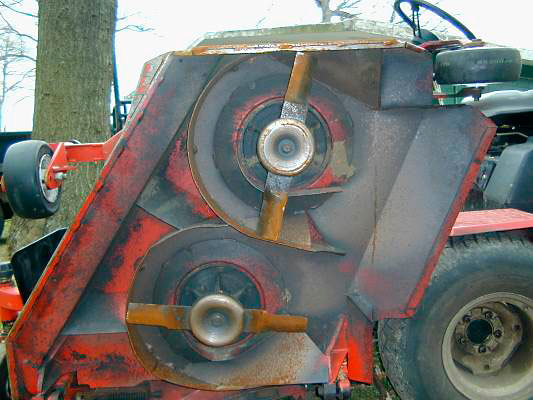Turfgrass runoff research consistently concludes that maintaining high shoot density turf is the most effective means of reducing runoff volume. The tortuous path travelled by rainfall or irrigation water increases as the number of shoots per unit area increases. In addition to the reduced runoff, the fibrous root system of turf has been shown to increase infiltration. The longer the water deposited on the turf surface is delayed from runoff, the more likely that proper infiltration will occur. The combination of reduced runoff volume and increased infiltration is a primary aspect of water quality protection, thus maintaining a dense turf is vital. In addition, denser turf also provides a better playing surface.
Mowing
A turf is defined as low growing vegetation maintained under regular mowing and traffic. Conversely, areas not regularly mowed are not considered turf. Mowing is a significant selection tool and one that, when done properly, has a profound influence on turf density.
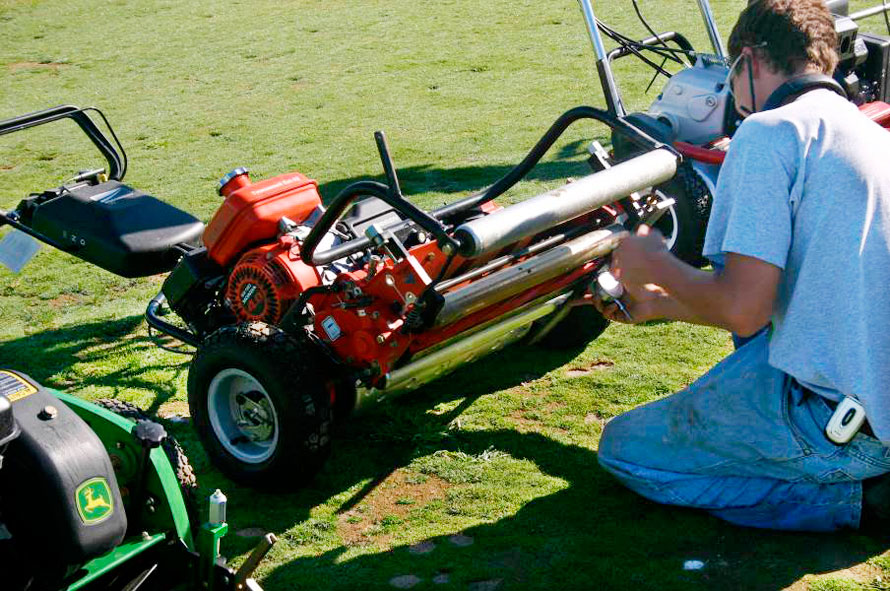
Proper mowing adjustment, especially reel mowers, ensures maximum turf performance while minimizing stress that leads to reductions in turf density. Source: Frank Rossi.
Mowing Height
Mowing practices require decisions regarding type of mower, height, frequency, and clipping management. Individually and collectively these practices, when performed properly, maximize turf density. Read more
Mowing Frequency
The turf growth rate and height of cut dictate mowing frequency. As mentioned previously, the lower the cut, the more frequently mowing is required. In general, increasing mowing frequency increases turf density. Read more
Mower Selection
Mower selection is based on the expected height of cut. Mowing heights at or below 1.5 inches are typically best achieved with a reel-type mower. Reel mowers allow for rapid clipping of turfgrass tissue at practical operating speeds with minimal turf damage (when properly adjusted). Mowing heights above 1.5 inches are best achieved with rotary impact mowers, also when blades are sharpened and properly balanced. Read more
Clipping Management
Clipping management is the decision to let the clippings fall back to the turf canopy after mowing or remove them in a bucket or bag. From a water quality perspective, grass clippings are a nutrient rich resource and should be viewed as fertilizer and handled and applied with similar precaution. Removal of clippings should only be performed if the function of the site dictates removal (such as ball roll on a putting surface). Accumulated clippings distributed over a relatively small area can significantly increase nitrate leaching. Some courses will remove clippings from fairways. Distributing these clippings to driving ranges, clubhouse lawns or simply stockpiled as organic waste. Excessive clippings aggregation has been shown to increase soil nitrate levels from less than 2.5 mg N kg-1 to a range of 15-30 mg N kg-1 across the 3-12 inch profile in areas that received four times the amount of normal clippings return. (Bigelow et al. 2005).
If clippings are left on the site, they must not be allowed to discharge into adjacent water bodies or to clump on the surface and shade the turf. Several research experiments have investigated the effect of long-term clipping management on turf fertilization. In general, clipping removal mines the soil for nutrients and takes them to another location. Thus, leaving the clippings on the site as the turf ages assists in sustaining the nutrient content of the soil and reduces the reliance on supplemental fertilizer.
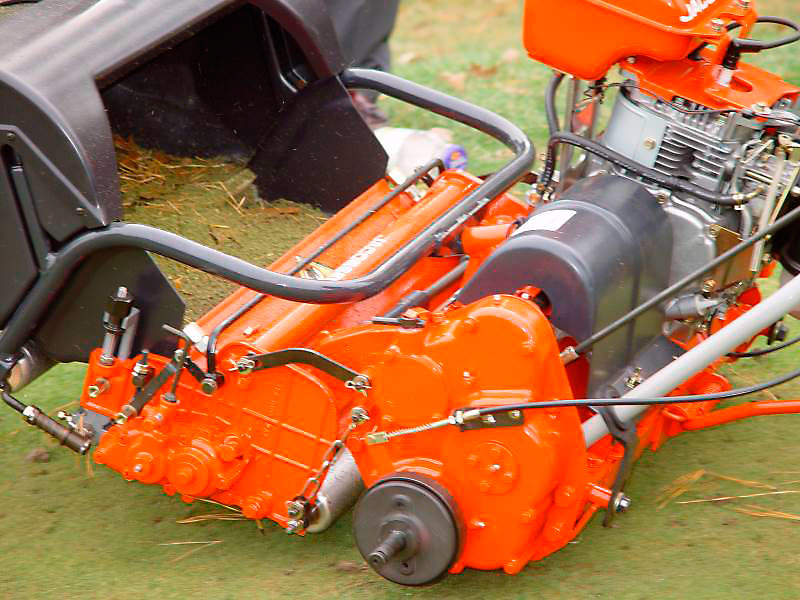
Clipping removal is only recommended on surfaces where they disrupt the function of the sites, such as putting surfaces. Source: Frank Rossi.
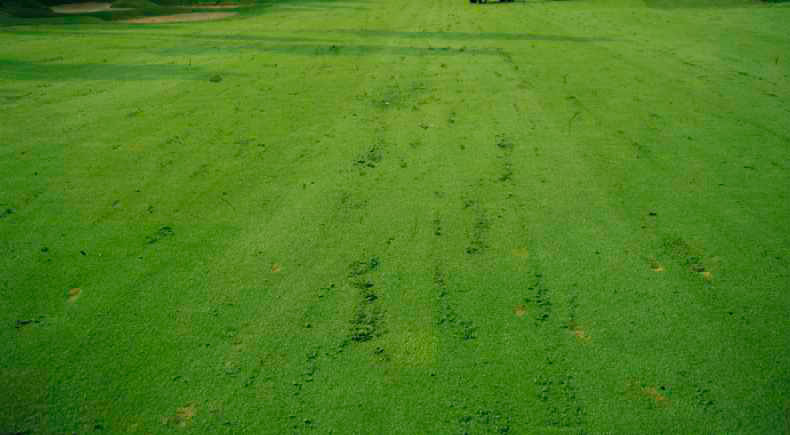
Clippings left on turf after mowing can lead to shading of the turf below and heat stress from microbial activity generated in the piles. Source: Frank Rossi.
Summary
In summary, a properly mowed turf maintains a high shoot density that limits surface water movement. A properly mowed turf sustains an adequate underground biomass to retain additional water and nutrients that infiltrate. Finally, when managing clippings consider them a nutritional resource and leave them on site if possible. Use care in removing or discharging in order to preserve water quality (for instance, do not put clippings in or near storm water treatment structures or wetlands).
